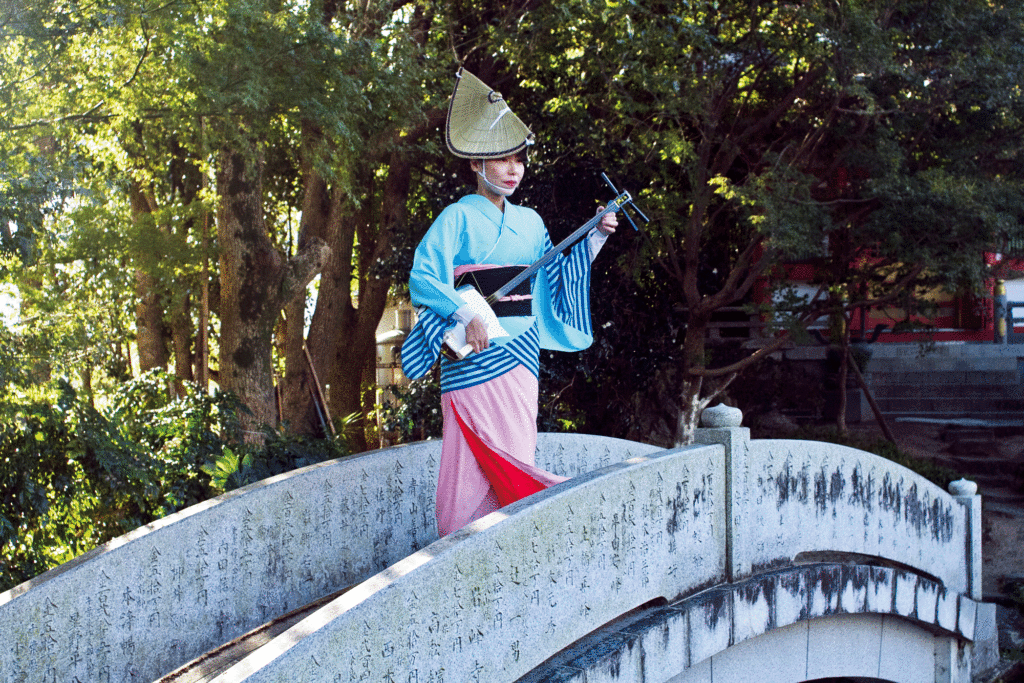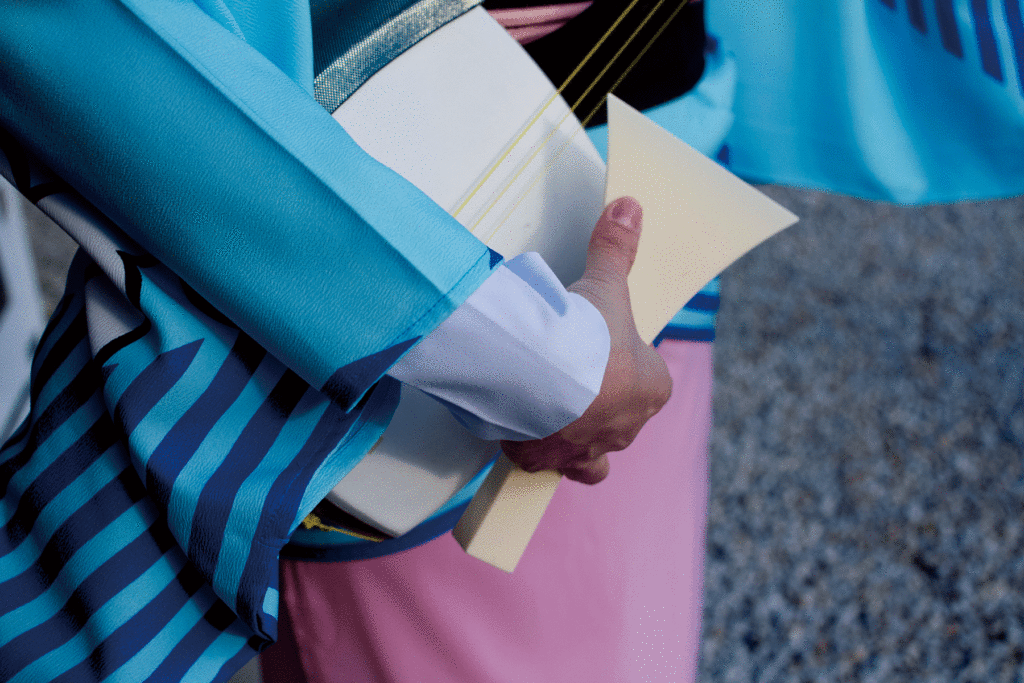Story 02 | Carried along by three silk strings.
When she was very young, Koimi Kanamori’s grandmother would practice the shamisen everyday. The large plectrum (called a ‘bachi’) would hit the three silk strings, letting a rhythmic twang reverberate throughout the house each afternoon. Sometimes the skin of the instrument would be hit after plucking the strings, and a special buzzing sound, known as ‘sawari’, would be made. Koimi began playing when she was only six years old, “I would just pick up my grandmothers instrument and play around with it, listening to the sound.”
That shamisen sound has come to embody traditional Japan, despite the instrument being an adaptation of earlier long necked lutes from China and Okinawa (the ‘sanxian’and ‘sanshin’ respectively). The shamisen provides the soundtrack to almost every Samurai film (or documentary about Japan) and it is also an essential part of Tokushima’s Awa Odori festival, where Koimi plays hers. Since those early days playing on her grandmothers instrument Koimi has become an experienced and renowned shamisen player and the most successful student of Okoi-san, one of Japan’s most famous shamisen players. Okoi-san’s singing and shamisen playing were recorded for the first record produced in Japan — an artifact kept inside a locked glass cabinet in the local Awa Odori museum. In 2008, shortly after she had celebrated her 100th birthday, and watched the cherry blossoms flower, Okoi-san passed away. “She sang and played shamisen right up until the day she died,” remembers Koimi.

Being a Tokushima local was the main reason Koimi chose Okoi-san as her teacher; the style of playing varies significantly (to experienced ears, at least) between regions and Koimi wanted to master the local variation of Shamisen, “here it’s a thinner sound, and has a really fast rhythm, up north the sound is much fatter.” The Awa Odori has had a big influence on the local sound, but the influence is not one way, “the shamisen also has enormous influence over the dancing,” says Koimi, “and I am always watching the feet and movements of the dancers as I play to motivate them.”
The rhythmic strumming of a shamisen is the soundtrack to the dance, the pace setter, and even more. Dancers in Tokushima claim that the shamisen is the key to falling under the Awa Odori spell, that inevitable trance which comes after hours of dancing to the monotonous music. “Over the hours I am playing my hands get very sore, and often I don’t realize until much later, because in the moment you lose your sense of self.” Although the Awa Odori festival might have begun as a drunken celebration, any dancer caught drinking today will be expelled or suspended from their group. Instead they achieve a stranger high, exhausted from the physicality of the dancing, they give themselves up to be carried along by the three silk strings of a shamisen.
< PAPERSKY no.38(2012)>












